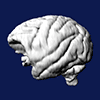-
-
sample data

|
-
-
-
sample data

|
-
sample publication

|
|
Parcellation of cortical afferents to three distinct sectors in the parahippocampal gyrus of the rhesus monkey: an anatomical and neurophysiological study.
J Comp Neurol. 2003 Nov 10;466(2):161-79. Blatt GJ, Pandya DN, Rosene DL.
The posterior parahippocampal gyrus (PHG) of the rhesus monkey (Macaca mulatta) is comprised of three distinct cortical areas based on cytoarchitecture, connectivity, and neurophysiological response properties. Fluorescent retrograde tracers placed in each PHG area demonstrated unique patterns of cortical afferent input to areas TH, TL, and TF. Area TF receives inputs from the multimodal cortices of the superior temporal sulcus including areas PGa, TPO, and MST, from the visuospatial parietal area PG-Opt, and from visual areas V3A and dorsal V4. Area TL receives afferents from the inferotemporal region including visual areas TE1 and TE2 as well as from areas TEa, IPa, and FST in the lower bank and depth of the superior temporal sulcus. In contrast, the input to area TH is from the rostral part of superior temporal gyrus, including the auditory association areas TS1-3, and from the middle sector of area TPO in the superior temporal sulcus. Frontal and cingulate areas also project to the PHG in largely differential patterns. To further investigate this a correlative electrophysiological study of the three PHG areas resulted in a confirmation of these differential cortical inputs such that visually responsive neurons were found in areas TF and TL, auditory responsive neurons or bimodal auditory/visual-responsive neurons in area TH, and somatosensory-responsive neurons at the TF/TL border. Since each PHG area also receives differential hippocampal input, these data suggest that the processing of unimodal or multimodal information may be related to memory processing functions that are largely segregated within areas TH, TL, and TF.
Neuroanatomical Connectivity References
|
|

